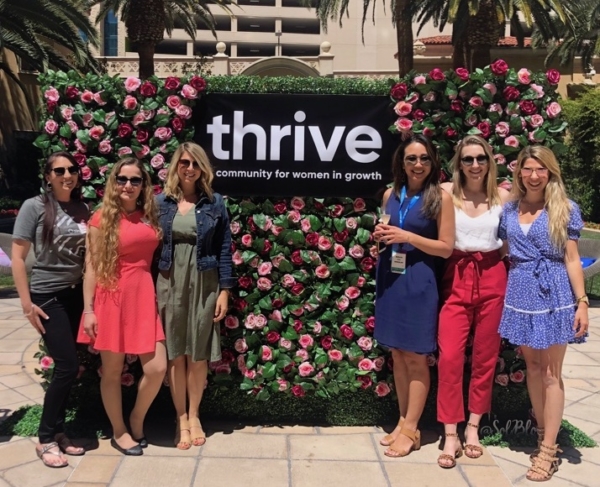CEO Insights is a new column by Singular CEO Gadi Eliashiv focusing on some of the most challenging issues in scientific marketing.
Most sophisticated growth organizations we’re working with are placing an enormous importance on creatives. These companies usually have in-house design teams dedicated for making creatives, plus processes and metrics around the production and launch process.
All of it is designed to ensure optimized results.
These companies understand the power of creative optimization and distribute shared responsibility for amazing creative throughout the organization. Designers have been educated about performance metrics, and they’re savvy enough to combine their art with science in the form of cold, hard metrics.
These top brands also have periodic meetings (bi-weekly or more) where the design team sits down with the marketing team. Together they carefully examine the performance of various assets, and find a balance between introducing new winning concepts, sustaining proven concepts, and eliminating bad ones.
More advanced marketers also apply particular conventions to how assets are managed and tagged, so that tens of thousands of creative variations can be grouped by a handful of key concepts, which helps identify key trends.
All of these workflows and analysis capabilities are available out of the box for our customers through Singular’s creative optimization suite, and it gives our customers an enormous edge.
So: what is the right process?
One area that was of interest to me was the pace at which companies swap out creative assets.
When asking various companies, I got a range of answers from: “we don’t have bandwidth for that at all” to “we have a constant refresh rate.” Some companies update on a fixed period of time (every two weeks or a month), while others update their creative “whenever design creates a new one.”
Obviously, not all creative costs the same to produce, and some creative is super expensive to produce in time and money like playables and videos. Other assets, however, can be produced quickly and efficiently, and when infused with time-specific context (such as a big concert, or a particular live event in a game) they can produce great results.
A common theme I’ve heard is the following way to run analysis on your creatives:
- Cadence
- Data input
- Creative asset performance from all channels (Singular does that out of the box: check out our API)
- Campaign targeting option data, particularly around the major self-attributing networks, to identify targeting methodology (value optimization, bid optimization, etc. …)
- Channel, country, region, plus any other breakdowns that makes sense to you
- Four weeks of data
- Period A: first 2 weeks of data
- Period B: second 2 weeks of data
- Two simple data outputs
- Check the trend of currently running creatives to detect big drops that might suggest these creatives should be cycled.
- The drops could be in clicks, installs, eCPM, or any other metrics that make sense
- For customers using Singular’s attribution, we enable ROI granularity all the way down to the creative level, so you can check for a drop in your main KPI (which is often what the ad engines optimize against)
- Isolate the creatives that did not exist in Period A, but existed in Period B, and identify how they are trending. Learn from new concepts that are succeeding well, and some that are failing to ramp up.
One example:
| Creative |
Period A |
Period B |
|
CTR |
Conversions |
eCPM |
CTR |
Conversions |
eCPM |
| Creative 1 |
3% |
7,500 |
$9.50 |
1.5% |
3,300 |
$11.75 |
| Creative 2 |
n/a |
n/a |
n/a |
3.5% |
15,000 |
$11 |
| Creative 3 |
n/a |
n/a |
n/a |
1.5% |
3,400 |
$9 |
| Creative 4 |
1% |
2,200 |
$3.40 |
2.3% |
4,300 |
$4.23 |
Creative fatigue and time
As I look at all this data, the questions I keep asking myself are:
- When is the right time to swap creatives?
- Do companies know those times?
- Can they even figure them out?
The answers to those questions, as I found out, are very complex. After dozens of talks with top tier marketers I got literally dozens of answers, and none of them was the silver bullet I was hoping for.
(Mostly likely, there isn’t any one single silver bullet. The techniques that work for one app are different than those that work for another brand.)
The one common thread in all these conversations was the favorite topic of creative fatigue detection. The formal definition of creative fatigue is that consumers/users/customers do not even see your ad anymore. They’ve become so used to it, that it is now just part of the default background for them.
Traditionally, the first thing people think about fatigue is that CTRs drop over time, because people have seen your ad again and again, and those who wanted to click have done that already.
But when I started researching some data, that naive assumption quickly surfaced as being incorrect.
When dealing with optimizing algorithms like Facebook’s and others, they will track the number of exposures each user had seen (frequency) and will cap that at a certain point, because their algorithm understands that it’ll be a waste of an impression, and also lead to a bad user experience.
So FB simply chooses another ad to show.
You can quickly see this phenomenon in the chart below.
In the first chart, CTR does not drop appreciably throughout the campaign. A campaign manager who looks only at this probably thinks that all is well with her ads.
But there is actually a significant problem.
What’s actually happening behind the scenes is that Facebook knows that it has exhausted your chosen audience, and the number of people it is showing the ad to has dropped precipitously:
It’s important to say ads will not always behave that way. That’s why when analyzing fatigue you need to not only know what assets you’re using, but also what ad channels you’re running on, what bidding methodology is being used, and what their algorithms do.
(For example: due to saturation, the algorithm could also start increasing the CPM bid to generate more impressions, which will decrease your ROAS).
In general, even if these algorithms are smart enough to avoid audience fatigue, it is still the responsibility of the marketer to identify it and remedy the situation. You can find new audiences, add new creatives, and so on.
But there can be more going on
Sometimes when you’re looking for creative fatigue you’ll see data that doesn’t make sense at first. For instance, you might have a click-through rate chart like this one, which shows creative gaining strength over time:
All looks well at first glance. But … if you check impressions, there’s clearly something else going on. The number of impressions is skyrocketing:
Something very different is going on here.
Hint: this behavior can be related to changes in bids and budgets … another key thing to think about when testing for creative fatigue. Changing the bid (even if it’s a CPI/CPA bid) will directly impact the amount of money you’re willing to spend on a certain impression, therefore creating more impressions that were not accessible before at your previous bid.
In short: creative fatigue is one of those concepts that seems easy to understand and easy to diagnose … but actually isn’t. To find out if creative fatigue is actually happening, you need to dig deeper into the data than most can or will.
Fortunately, that’s where Singular can help …
What’s next
That’s it for this post. In the next post, I’ll look more at how bids and budgets impact click-through rates, impressions, and conversions.



